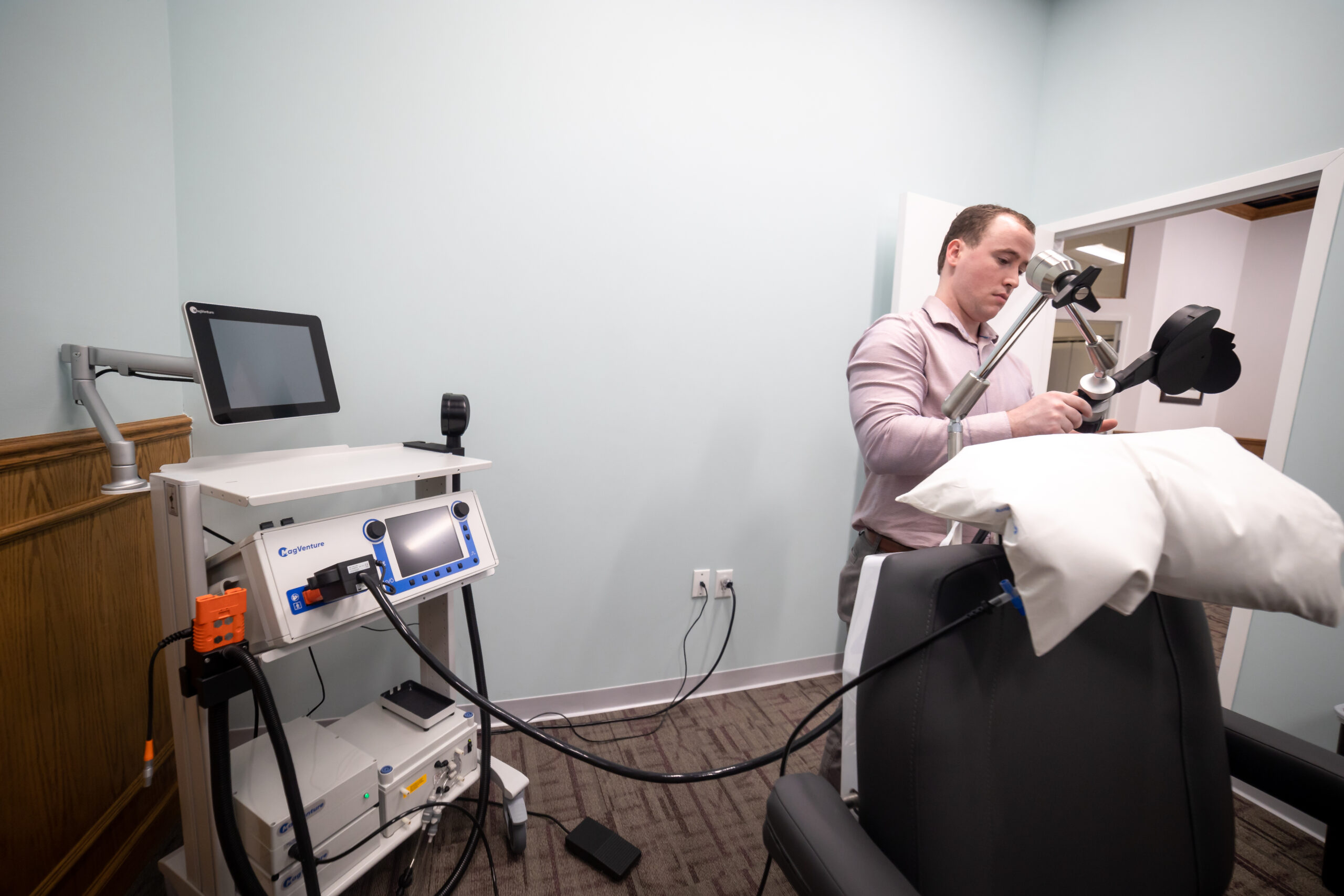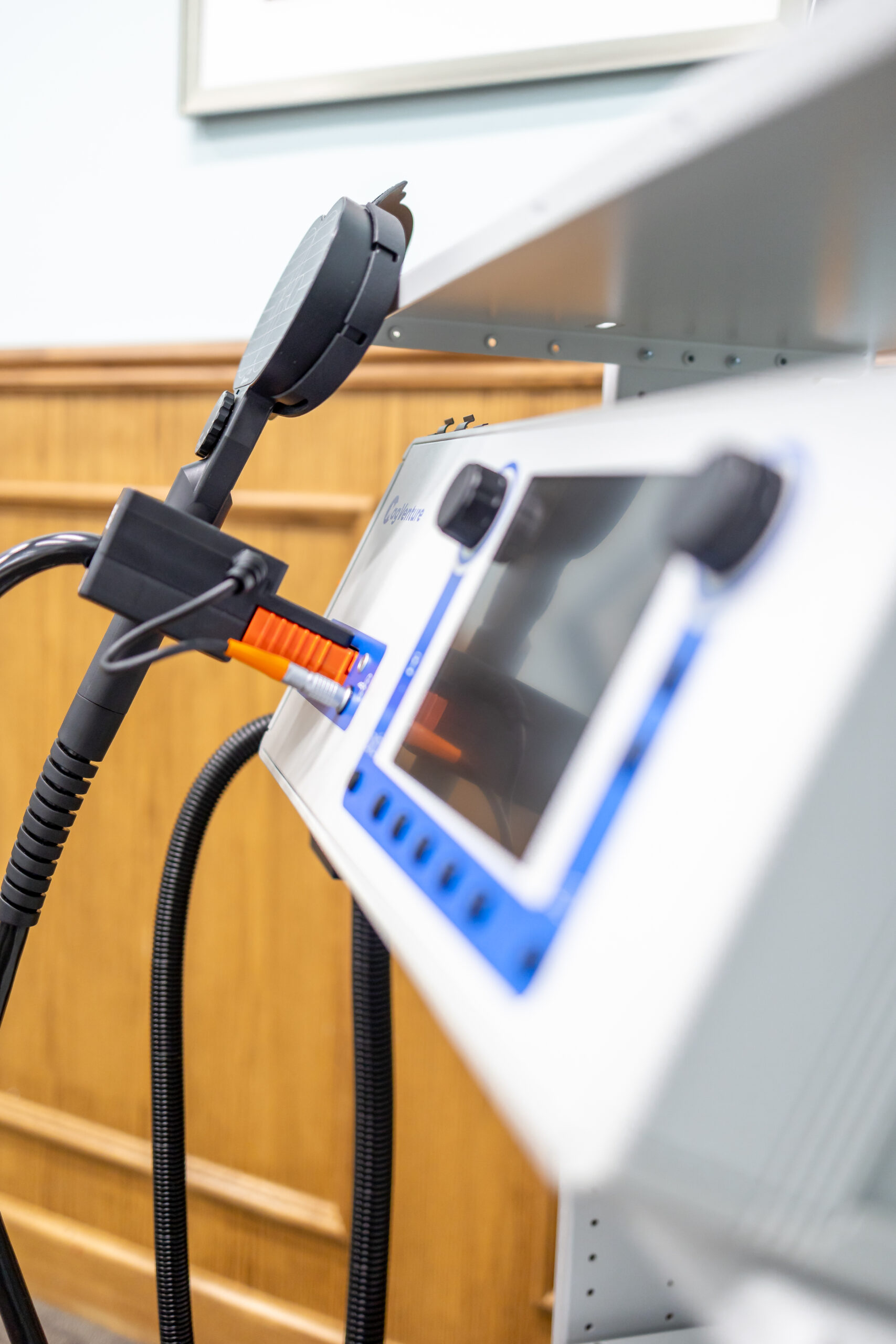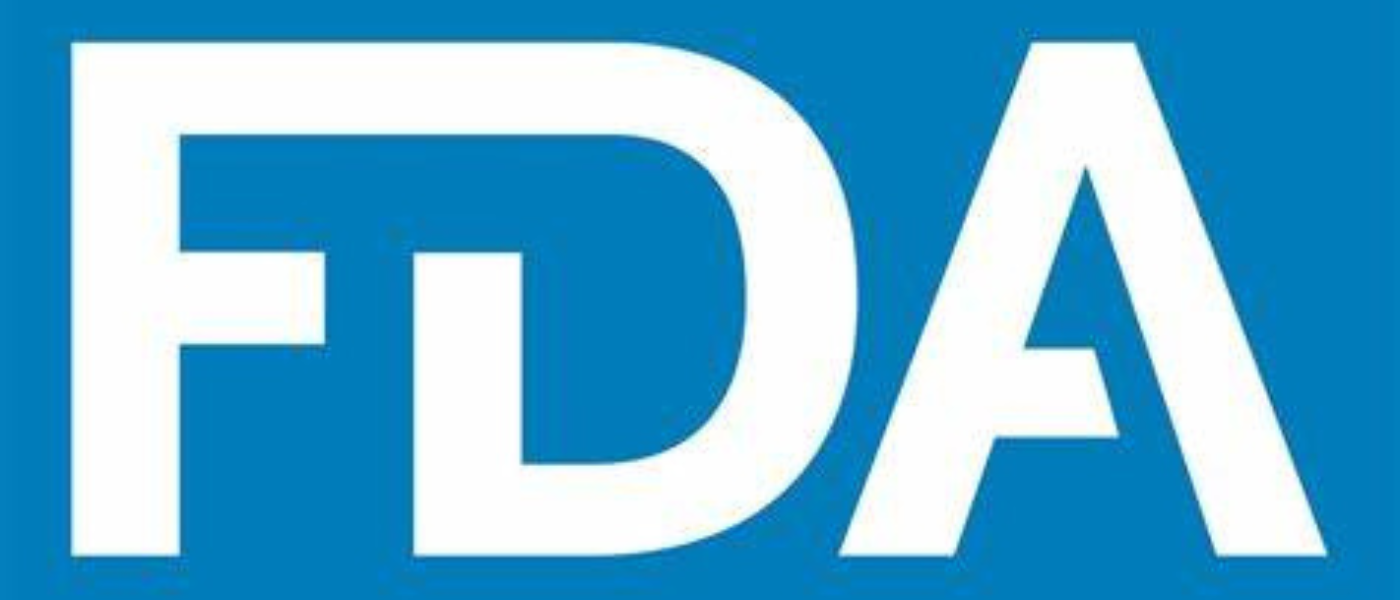Introduction
When our team was at the most recent TMS Clinical Society yearly conference, we ran into a group of TMS clinicians and doctors from Australia. Our clinic treats other off-label conditions, such as PTSD and post-concussion syndrome, so the conversation naturally turned to these topics. One condition that came up was the treatment of stroke victims, with the Australian clinic mentioning that TMS was used as the “first line of defense” in Australia under certain circumstances. Intrigued by this information, we explored further whether TMS therapy could offer relief or even reversal of the sudden damage caused by a stroke.
Understanding Strokes: Causes and Types
A stroke is a medical emergency when blood flow to any part of the brain is interrupted or reduced, preventing brain tissue from getting oxygen and nutrients. The interrupted blood flow causes damage to the brain, and brain cells begin to die in minutes. There are two main types of stroke: ischemic stroke and hemorrhagic stroke. An ischemic stroke occurs when the blood supply to part of the brain is interrupted or reduced, preventing brain tissue from getting oxygen and nutrients. It happens when the brain’s blood vessels narrow or block, causing severely reduced blood flow. Blocked or narrowed blood vessels are caused by fatty deposits that build up in blood vessels or by blood clots or other debris that travel through the bloodstream, most often from the heart, and lodge in the blood vessels in the brain. A hemorrhagic stroke happens when an artery in the brain breaks open, causing bleeding in the brain. A transient ischemic attack (TIA), also known as a mini-stroke or warning stroke, is caused by a small clot that briefly blocks an artery. TIAs are an important warning that a more serious stroke may occur soon.
TMS as a Treatment for Stroke Victims: What You Need to Know
Yes, doctors are using TMS to treat stroke victims. TMS treatments have shown promise in improving arm recovery in stroke patients. As a therapeutic tool, TMS has also been used to safely enhance motor performance in stroke patients. BrainsWay’s treatment offers an effective, safe, and non-invasive treatment that uses Deep Transcranial Magnetic Stimulation (TMS) for stroke rehabilitation. There are TMS therapy centers that provide TMS Therapy for Post-Stroke Patients. According to research, using TMS after a stroke could promote motor recovery and alter the activity of the motor cortex, the part of the brain that controls voluntary movement. However, patients with metal in their head should avoid this treatment because the magnetic fields in TMS can make these implants heat up or move, which can cause serious injuries.
Exploring the Mechanisms of TMS on Stroke Recovery
Transcranial magnetic stimulation (TMS) is a non-invasive procedure that uses magnetic fields to stimulate nerve cells in the brain to improve symptoms of depression. TMS is also used to treat stroke patients. TMS treatments have shown promise in improving arm recovery in stroke patients. In particular, continuous theta burst stimulation (cTBS), a variant of rTMS, has been used to promote upper limb recovery in stroke patients. TMS works by stimulating certain areas of the brain. During an rTMS session, an electromagnetic coil is placed against the scalp near the forehead. The electromagnet painlessly delivers a magnetic pulse that stimulates nerve cells in the region of the brain involved in mood control and depression. The therapeutic potential of TMS is not limited to stroke patients, as efficacy, tolerability, and safety have also been demonstrated for other neurological and psychiatric disorders. Deep TMS is another type of TMS that can be used for stroke rehabilitation. It performs magnetic stimulation of brain structures and networks affected by the stroke and brings significant improvement to patients. Magnetic therapy has been shown to help stroke survivors improve their gait and walk independently again. TMS is a non-invasive tool that has been used to investigate the brain plasticity changes resulting from stroke and to enhance motor recovery after stroke.
Research Findings: The Efficacy of TMS for Stroke Victims
Research suggests that TMS therapy can be beneficial for stroke victims, particularly in promoting better motor recovery and easing the symptoms of post-stroke depression if conventional therapy has not worked. TMS treatments have shown promise in improving arm recovery in stroke patients. According to a multi-institutional study, only transient side effects, namely minor dizziness, discomfort at the stimulation site, and mild headache, were reported after rTMS by a number of patients. TMS is considered safe, but patients with metal in their head should avoid this treatment because the magnetic fields in TMS can make these implants heat up or move, which can cause serious injuries. However, careful communication seems to be a key factor in a patient’s sense of safety and satisfaction with TMS treatment participation.
Assessing the Safety of TMS for Stroke Patients
TMS therapy is considered safe for stroke victims, but it is not for everyone. Patients with metal in their head, such as deep brain stimulators, electrodes, neck or brain stents, aneurysm clips or coils, shrapnel or bullet pieces, facial tattoos with metallic ink, metal plates, cochlear implants, or permanent piercings should avoid this treatment because the magnetic fields in TMS can make these implants heat up or move, which can cause serious injuries. However, there are no significant risks associated with TMS therapy for stroke victims. In a multi-institutional study, only transient side effects, namely minor dizziness, discomfort at the stimulation site, and mild headache, were reported after rTMS by a number of patients. According to the experiences of the patients in an inpatient facility, undergoing rTMS therapy was not experienced as a burden, and careful communication seems to be a key factor in a patient’s sense of safety and satisfaction with rTMS treatment participation. Although rTMS is generally thought to be safe in patients with stroke, investigators should follow safety guidelines and monitor the potential risks.
Global Adoption of TMS for Stroke Rehabilitation
There are no clear search results that provide a comprehensive list of countries using TMS for stroke victims. However, some of the search results provide information on the countries that have conducted research or studies on TMS for stroke rehabilitation. According to one of the search results, there were six major countries that focused on rTMS for stroke treatment, including the United Kingdom, Germany, the United States, Australia, South Korea, and China. Another search result mentioned that the USA published the most papers about tDCS in stroke, while China has caught up with other countries. It is important to note that the absence of information on a particular country does not necessarily mean that they are not using TMS for stroke victims.
Research and further reading
- Mayo Clinic – Transcranial Magnetic Stimulation
- BMC Neurology – Transcranial magnetic stimulation for upper limb motor recovery in stroke patients: A systematic review and meta-analysis
- BrainsWay – Post-Stroke Rehabilitation
- PubMed Central – Transcranial magnetic stimulation as a tool for motor recovery in stroke patients: an overview of the clinical evidence
- GIA Miami – TMS Therapy for Stroke Patients
- Heart and Stroke Foundation – What is Stroke?
- National Heart, Lung, and Blood Institute – Stroke
- American Stroke Association – About Stroke
- Mayo Clinic – Stroke
- Centers for Disease Control and Prevention – Stroke
- Cleveland Clinic – Stroke





